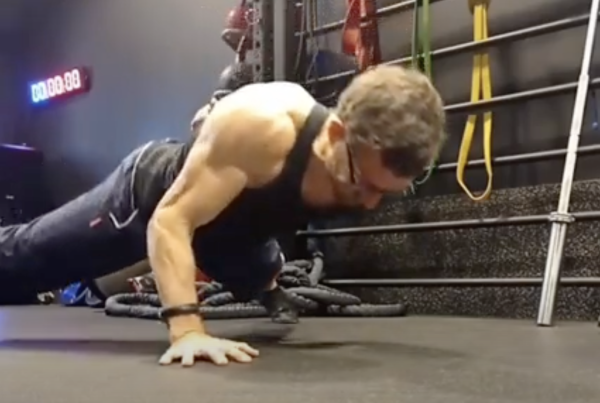The 10,000 steps goal was prescribed for weight loss and aerobic fitness. It is simple. It is also cost effective, burns an adequate amount of energy, is easy to remember and gives us a definitive goal. Dr Paul Batman shares his alternative to the 10,000 steps goal.
It is beyond debate that there should always be a physical activity component included in all weight-loss programmes. Not so much to make a huge contribution to energy expended, but to also provide major health benefits that even weight loss might not provide. The physical activity only needs to be performed at low-to-moderate levels of intensity, so we are not talking about high-intensity fitness activities or gym alternatives. Clients most surely want to lose weight but, at the same time, they also want to improve their health. What better way to achieve this than starting a sensible eating plan and using walking as the main form of physical activity? But what happens if, for some reason, we can’t walk or don’t want to walk? What is our destiny?
Do we continue to sit while planning, preparing and eating our food or is there an alternative? Remember that there are very serious issues to contend with by sitting too much, even in the presence of major weight loss. Sedentary people spend, on average, up to 10 hours a day at the lowest level of metabolism. I was in a similar position some time ago; after surgery I had difficulty in continuously walking although my knee was quite strong.
So, I decided to look for alternatives to walking 10,000 steps …
I thought long and hard as to how I could equate any other movement to the 10,000 steps model. I decided to calculate the number of calories expended in 10,000 steps and then see if I could equate it to other activities I do around the house. I weighed 80kg and I am 179cm tall. I calculated that an 80kg person walking 10,000 steps (which is approximately 8km) would take 80 minutes if walked at 6km per hour. OK, sounds good, but what if I walked faster? I calculated that if I walked at 6km per hour I would expend approximately 370 calories walking for 80 minutes. I also calculated that, if I walked at 8km per hour, I would expend 380 calories in walking for 60 minutes.
What could I do around the house without going anywhere to expend the same amount of calories that I would get from walking 10,000 steps? I decided to calculate how much energy (calories expended) it would take to sweep the floor, sweep the garage, rake the leaves, mow the lawn and carry some bricks that I had to move around the garden. So, I swept the floors for 15 minutes, swept the garage for 15 minutes, raked the leaves for 15 minutes, mowed the lawn for 30 minutes and carried bricks from one spot to another for 60 minutes. To my amazement, I calculated that I expended 70 calories sweeping the house, 84 calories sweeping the garage, 84 calories raking the leaves, 189 calories mowing the lawn and 672 calories carrying and moving bricks from one place to another. The total number expended in 2.5 hours was 1,099 calories, just by completing household activities. If I go back and just equate my household activities with the time taken to complete 10,000 steps, I would have completed these tasks (sweeping, raking, mowing) in 75 minutes and expended 427 calories in comparison to expending 370 calories walking 10,000 steps at 6km per hour or 380 calories walking at 8km per hour for 60 minutes.
How can this be?
In all my household activities, I used both my arms and legs, with the additional movements of bending, striding, picking, pushing, squatting, lunging, etc. These additional movements produced greater energy expenditure than walking alone. I think that 10,000 steps is an excellent exercise prescription that is universally accepted as a legitimate form of physical activity for weight loss and general fitness. However, there are some people who might find it a little too daunting, unsafe, time poor to commit to, etc. Now there is an alternative for them, as well as giving the 10,000 step walkers the chance to move more and burn more energy! This teaches us never to underestimate the energy expended in lifestyle movements as a legitimate player in the weight-loss and health equation.
Making a choice to include lifestyle physical activity into our weight-loss journey, in combination with our 10,000 steps, is a great opportunity to use heaps more additional energy that can contribute to our weight-loss goal.
Where to next? Check out why Britain needs to go on a diet.








